Keynote Speakers
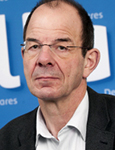 Adam Bezuijen, PhD
Adam Bezuijen, PhD
Professor in Soil Mechanics and Geotechnics
Laboratory of Geotechnics
Ghent University
Netherlands
Title: Tunnel-pile Interaction: centrifuge and field tests
Abstract: In the nineties of the last century the topic of tunnel-pile interaction was ‘hot’ in the Netherlands. A metro line was planned in Amsterdam and the behaviour of the old timber-pile foundations during TBM drilling was of major concern. Centrifuge tests were performed and a full-scale pile loading test close to another TBM driven tunnel. In hindsight this can be seen as the start of quite some centrifuge research on this topic. An overview of this research until 2015 is published by Dias and Bezuijen in 2015. The experimental research has also led to a better understanding of the possible failure mechanisms. The lecture will show some history on this topic. Discuss some tests and how to interpret the results. Remaining issues will be discussed.
Biography: Adam Bezuijen is professor in soil mechanics and geotechnics at Ghent University in Belgium and part-time senior specialist at Deltares, Delft, the Netherlands. He worked fulltime at Deltares before becoming a professor. At Deltares he was involved in research on revetments, dredging, tunnelling, geotextiles and model testing and was the scientific coordinator of the geotechnical centrifuge of Deltares. As a professor in Ghent, he guides PhD and Post-doc research on tunnelling, piled embankments, geotextile reinforcement, polymer treated bentonite and backward erosion piping. He is chair of the ISSMGE technical committee TC204 “Underground construction in Soft ground” and member of TC104 “Physical Model Testing.”

Jonathan Black, PhD
Senior Lecturer in Geotechnical Engineering
Department of Civil and Structural Engineering
The University of Sheffield
Title: Centrifuge modelling for geotechnical instruction
Abstract: Laboratory based demonstrations are a valuable learning tool within the engineering curriculum as they provide an opportunity to challenge and reinforce theoretical concepts taught in lectures. In soil mechanics laboratory-based demonstrations are typically limited to classical element tests to assess properties such as compressibility and strength. Although beneficial to build comprehension of geotechnical theory, these tests fail to offer students any insight of how real geotechnical structures perform in practice i.e. slopes, retaining structures and foundations. The geotechnical centrifuge is an important facility in research activities enabling small scale models, tested at enhanced gravitational acceleration, to the represent the full-scale field prototype. This presentation introduces the concept of using centrifuges within educational instruction and reports on (i) the development of a 1.0m diameter teaching centrifuge developed at The University is Sheffield, (ii) broader aspects associated with embedding centrifuge technology within the educational curriculum, and (iii) research opportunities enabled.
Biography: Dr Jonathan Black is a Senior Lecturer at the University of Sheffield, UK. He studied his undergraduate and PhD at Queen’s University Belfast before joining the Sheffield Geotechnical Group in 2008. He is the Director of the newly formed Centre for Energy & Infrastructure Ground Research that is home to a 4m research and 1m educational centrifuges. He is the UK representative on ISSMGE TC104 – physical modelling in Geotechnics Committee. His research interests have focused on developing advanced image based visualisation techniques in physical modelling, climate change impact on infrastructure resilience and offshore wind energy.
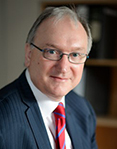 Michael C.R. Davies, PhD (Cantab), CEng, FGS, FICE, FEngNZ, FRSE, FLSW
Michael C.R. Davies, PhD (Cantab), CEng, FGS, FICE, FEngNZ, FRSE, FLSW
Research Professor, University of Sussex
Honorary Visiting Professor, City
University of London
Title: Geotechnical centrifuge modelling: Capturing complexities to enable analytical solutions
Abstract: Observations of geotechnical systems in the field have, from the earliest times of the application of engineering mechanics to analysis and design in civil engineering, served to inform the development of analytical solutions for assessing stability, calculating movements and for predicting the impact of geotechnical processes. Correctly scaled and appropriately instrumented physical models can provide an alternative to field measurements. Because of its scaling laws, geotechnical centrifuge modelling has become accepted as a technique that, for a wide range of situations, can simulate field conditions accurately. In common with other physical modelling techniques, centrifuge modelling permits close control over material properties and well defined boundary conditions. This presents the opportunity to conduct parametric studies that are typically extremely difficult, expensive and time consuming to perform in the field and which in certain cases – such as with seismic actions - are impossible to achieve. However, as with analytical and numerical modelling, in centrifuge modelling it is necessary to produce a simplified model of the prototype being assessed in which the key elements are captured. These features of centrifuge modelling allow the technique to be used in the development and validation of both analytical and numerical solutions.
Biography: Professor Michael Davies is on sabbatical leave having been Pro-Vice-Chancellor for Research at the University of Sussex. He is an Honorary Visiting Professor at City, University of London and has previously been Dean of Engineering at the University of Auckland, Deputy Principal and Dean of Engineering and Physical Sciences at the University of Dundee, and a lecturer at Cardiff University. At both Cardiff and Dundee universities Professor Davies founded research groups and established Geotechnical centrifuge facilities. Professor Davies is a former Chairman of the British Geotechnical Association and from 2009 to 2013 was Vice-President for Australasia and First Vice-President of the International Society for Soil Mechanics and Geotechnical Engineering.
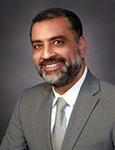
Hesham El Naggar, PhD, P. Eng., FEIC, FASCE
Professor and Research Director
Department of Civil and Environmental Engineering
Geotechnical Research Centre
Western University
Title: Application of centrifuge testing for sustainable infrastructure
Abstract: Centrifuge testing offers several advantages, including small cost and faster construction time compared to full scale testing, while allowing gathering of abundant and reliable information. Furthermore, centrifuge tests are able to simulate complex problems and allow us to study the physics involved in these problems in situations that are almost impossible to consider at full scale. For example, the behaviour of structures resting on or embedded in stratified soils and subjected to a complex schemes of loading (e.g. earthquakes, waves) can be evaluated through centrifuge testing. Additionally, use of scaled models can expedite long-term processes such as consolidation and low frequency loads and can therefore be of significant help to gain insight in long-term behavior of onshore and offshore structures subjected to environmental loads. The presentation will discuss some soil-structure interaction problems addressed through centrifuge studies and discuss its potential for infrastructure projects, such as: construction and testing of innovative foundations for highway and road infrastructure; evaluating the seismic and dynamic response of foundations supporting bridges, wind turbines and telecommunication and power transmission towers, buried pipeline networks and transportation systems (e.g. roads, culverts).
Biography: Dr. El Naggar is a Professor of Engineering at Western University, Canada. He is Editor-In-Chief of Soil Dynamics and Earthquake Engineering and past Associate Editor of the Canadian Geotechnical Journal. He published more than 400 technical papers/book chapters on foundations, soil-structure interaction and geotechnical earthquake engineering; and consulted on major projects worldwide. He received numerous awards including: Geosynthetics, Stermac, Meyerhof, Canadian Geotechnical Colloquium Speaker, Western Faculty Scholar, Outstanding Teaching, and Research Excellence Awards as well as the 2015 Ontario Professional Engineers Medal for Engineering Research & Development. He is an elected Fellow of Engineering Institute of Canada and the American Society for Civil Engineers.

Christophe Gaudin, MEng, PhD
Professor & Head of School
Faculty of Engineering and Mathematical Sciences
Oceans Graduate School
The University of Western Australia
Title: Offshore renewables: Is centrifuge modelling the right tool?
Abstract: Centrifuge modelling has been used extensively over the last five decades to address onshore geotechnical challenges associated with oil and gas developments. In the recent years, the development of offshore renewables structures, including wind turbines and wave energy converters has increasingly mobilised the offshore geotechnical engineering community. This presentation highlights and demonstrate the advantages of centrifuge modelling to address the new challenges raised by renewable developments. This is illustrated through some aspects of foundation installation and behaviour such as, dynamic tensile loading, foundation installation in sand, and high cyclic number and multidirectional loading, which are specific to offshore renewables. The emphasis is on the modelling techniques developed to address these challenges and the opportunities provided by centrifuge modelling.
Biography: Christophe Gaudin is a Professor of Geotechnical Engineering at the University of Western Australia, the Director of the Centre for Offshore Foundation Systems, the Director of the newly established Wave Energy Research Centre in Albany and the Head of the Oceans Graduate School, a multi-disciplinary research group of about 100 oceanographers, structural, hydrodynamics and geotechnical engineers. After graduating with a Doctorate in Soil Mechanics (Ecole Centrale de Nantes) in 2002, Christophe joined UWA in 2003. His research interests cover offshore anchoring systems and shallow foundations, pipeline-soil interaction and similitude principles associated with centrifuge modelling, for which he has authored more than 180 referred publications. He is currently spearheading several research initiatives associated with foundation systems for offshore renewables, with support from local and international industry. Professor Gaudin has built a strong relationship with the offshore oil and gas and wave energy industry, raising and managing over $12M of research funding and producing over 80 consulting reports.
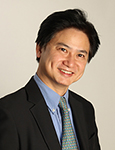
Charles W.W. Ng, PhD
Chair, Professor in Department of Civil & Environmental Engineering
The Hong Kong University of Science and Technology, HKSAR
School of Engineering
Title: Recent advances in centrifuge modelling in HKUST
Abstract: Geotechnical centrifuge experiments can be well controlled and performed at stress levels appropriate to field conditions. These advantages, together with its time and cost effectiveness, has made centrifuge modelling an often preferred experimental method in understanding complex geotechnical phenomena. In this lecture, novel centrifuge modelling techniques have been developed at the geotechnical centrifuge facility at the Hong Kong University of Science and Technology (HKUST) and their applications to the investigation of five complex geotechnical problems are described. The five geotechnical problems include a forensic investigation on the collapse of a 13-storey high-rise building in Shanghai, three-dimensional interaction between multiple tunnels of different tunnel shapes, the serviceability of energy piles in clay and sand, the impact mechanisms and performance of flexible barriers subject to debris flows, and the effects of root geometry on slope stability. The role of centrifuge modelling in advancing scientific knowledge and assisting in geotechnical design and forensic investigation will be revealed and highlighted.
Biography: Dr. Charles W.W. Ng is currently the CLP Holdings Professor of Sustainability, Chair Professor in the Department of Civil and Environmental Engineering and Associate Vice-President for Research and Development at the Hong Kong University of Science and Technology (HKUST). He is the President of International Society for Soil Mechanics and Geotechnical Engineering (2017-2021).
Professor Ng earned his PhD degree from the University of Bristol, UK in 1993. After carrying out a period of post-doctoral research at the University of Cambridge between 1993 and 1995, he returned to Hong Kong and joined HKUST as Assistant Professor in 1995 and rose through the ranks to become Chair Professor in 2011.
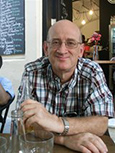 Ryan Phillips, PhD
Ryan Phillips, PhD
Principal Consultant for Geotechnical Engineering
C-CORE
Director, Dr. Jack Clark Geotechnical Centrifuge Facility
St. John's, Newfoundland
Title: Three decades of Canadian centrifuge modelling experience
Abstract: Centrifuge modelling started in Canada in 1984 at Queens University, and has since been practised at five different institutes nation wide. Examples of modelling programs from some of these institutes will be presented, with a focus on the 25 years of experience at C-CORE in Newfoundland. These programs will include mitigation of earthquake effects, pipe-soil interaction and ice seabed interaction.
Biography: Ryan Phillips is Principal Consultant for geotechnical engineering at C-CORE and Director of their Dr. Jack Clark Geotechnical Centrifuge Facility in St. John’s, Newfoundland. He has over 30 years of geotechnical engineering experience in applied research and consulting. Ryan has managed numerous industry programs and JIPs, mostly related to offshore foundation systems and onshore structures, especially pipelines. He is cross-appointed as an Associate Professor in Faculty of Engineering & Applied Science at Memorial University, and is the author or co-author of over 200 publications.

